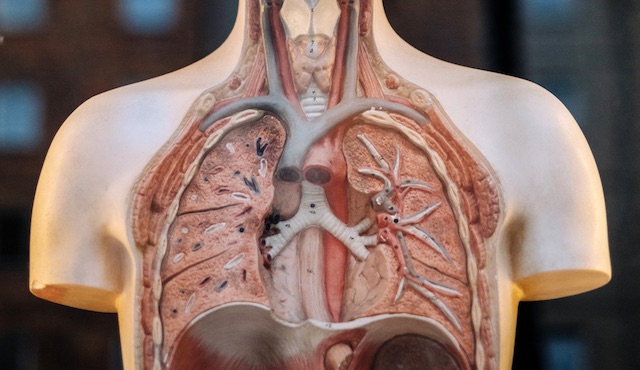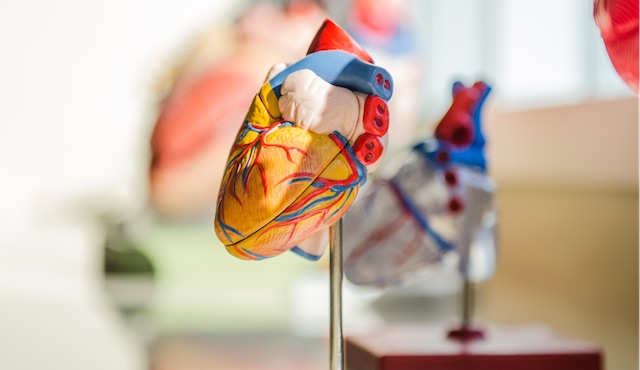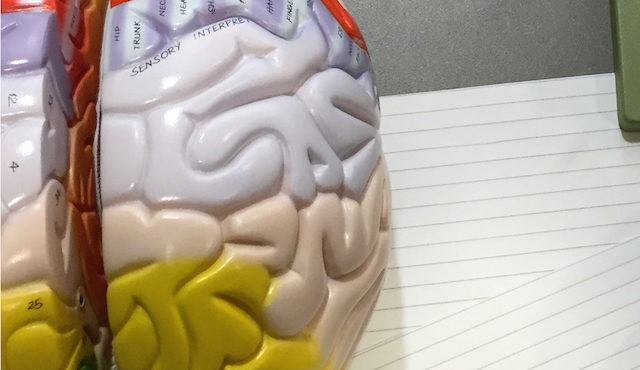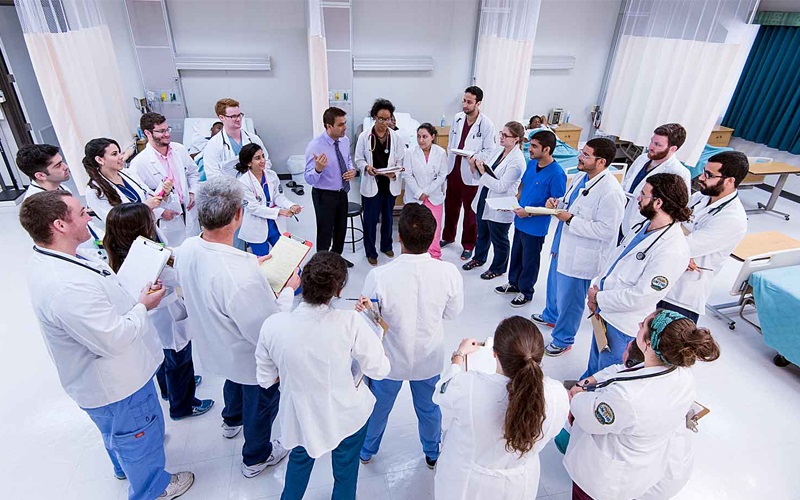Your Guide to MCAT Registration
Learn how to register for the MCAT step-by-step, including key dates, fees, and what to bring—plus tips to secure your ideal test date and prep with confidence.

Your Guide to MCAT Registration
Learn how to register for the MCAT step-by-step, including key dates, fees, and what to bring—plus tips to ...

Here’s What to Bring to the MCAT
There are strict rules regarding what to bring to the MCAT, so it’s important to know what is and is not ...

What is CARS on the MCAT?
Proper preparation is key for success with CARS on the MCAT. Learn tips and strategies for CARS to ensure that you ...

4 Easy Steps for Creating an MCAT Study Plan
Students spend 300–400 hours prepping for the MCAT, so don’t wait until the last minute to ...

MCAT Accommodations: What You Need to Know
Discover essential preparation strategies and tips for applying for MCAT accommodations. Tailor ...

DAT vs MCAT: A Comparison of the Tests
Curious about DAT vs MCAT? Understand the differences and similarities to plan your path to success! ...

When Should You Take the MCAT?
Make a smart plan for when to take the MCAT with our guide to choosing the right MCAT date for you.

How to Choose a Pre-Med Major
What you study can set you apart in the medical school admissions process. Find out how to choose a good ...

Best Pre-Med Majors
Check out our list of the best pre-med majors, and learn how your major can help you on the MCAT.

Craft a Stand-Out Medical School Application
Get into medical school by learning what med schools value in an applicant. Here's how to make ...

Medical School Admissions Timeline
Follow our medical school admissions timeline to stay on track with your pre-med requirements, MCAT prep, ...
.jpg)
Pre-Med Shadowing Abroad Is A Great Opportunity for Pre-Med & Pre-Health Students - Presented by Our Partners
Many pre-med or pre-health majors rule out studying ...

MCAT Mnemonics
The best MCAT mnemonics for biology, biochemistry, physics, general chemistry, organic chemistry, and psychology and ...

Medical School Letters of Recommendation
The medical school letter of recommendation is your opportunity to let others make your case for ...

What to Expect in Medical School
Considering an MD? Read our overview of the training you’ll receive to become a doctor so you know what to ...

What is a Good MCAT Score?
A good MCAT score depends on your target medical school & overall application. Get average MCAT scores & ...

Popular Combined Degree Programs for MDs
Here is the only list you need to educate yourself on combined degree programs for med students. ...

How Hard is the MCAT?
How hard is the MCAT? The length of the test, variety of topics, and differing studying methods may challenge ...

15 Tips for Your Medical School Personal Statement
Write a standout medical school personal statement with our expert tips.

4 MCAT Myths
The Princeton Review debunks the 4 most common MCAT myths, so you can conquer the MCAT and boost your score.

5 Essential Tips for Your Medical School Interview
From making a great first impression to anticipating potential interview questions, learn ...

Anatomy of a Medical School Application
From the AMCAS application to secondaries, here’s a comprehensive list of everything you'll need to ...

Tips for Non-Traditional Applicants to Medical School
Applying to med school as a nontraditional applicant? Our top tips for older students ...

7 Smart Tips for Pre-Med Students
Complete your pre-med requirements, balance your time, and position yourself for a fantastic medical ...

5 Things You Must Do Before Reapplying to Medical School
Are you a second-time applicant? Learn what you can do to improve your candidacy ...

How to Choose A Medical School
Learn how to choose a medical school that is the best fit for you. These questions will help you evaluate the ...

What is the USMLE?
Learn about the USMLE board exam for medical students. Discover what USMLE is, its three-step structure, and its ...

QUIZ: How Well Do You Know the MCAT?
Are you MCAT ready? Take our MCAT quiz and test your knowledge of exam format, sections, and question ...

MCAT Time Management Strategies
A clear MCAT time management strategy helps you stay calm and work smarter. Learn how to pace yourself on ...

8 Essential MCAT Science Strategies
Our test-taking tips will help you capitalize on your MCAT prep. Use these 8 MCAT strategies when you ...

How to Read Faster for the MCAT
On the MCAT timing is everything. Learn how to read through science and CARS passages faster and more ...

MCAT Study Guide
Learn when and how to study for the MCAT with our MCAT study guide. We’ll help you make the right MCAT study schedule for ...

Creating Your MCAT Prep Timeline
Learn how long to study for the MCAT and when to begin your prep with our MCAT study timeline.

Your Ideal MCAT Study Schedule
Create the perfect daily MCAT study schedule for you. Plus, view sample study schedules with and without a ...

Top 10 MCAT Study Habits
Ready dive into your MCAT prep? Learn the ten MCAT study habits that will actually boost your score.

MCAT Memorization List and Tips
Learn what you need to memorize for the MCAT and get memorization tips for committing tricky material to ...

6 Steps to Conquering MCAT CARS
Want to ace MCAT CARS? It’s practice not luck that will help you conquer the MCAT verbal reasoning section.

How to Build MCAT Critical Reading Skills
From Chemistry to CARS, the MCAT requires excellent critical reading skills. Learn how to get the ...

MCAT Sample Questions & Explanations
Try these MCAT sample questions from every subject on the exam from Psych to CARS. Check your answers ...

50 Common Medical School Interview Questions
Resist the temptation to wing your med school interview! Check out the most common medical ...

Should You Retake the MCAT?
Learn everything you need to know about retaking the MCAT, and expert tips for deciding if you really need a ...

5 Tips for Medical School Secondary Applications
Land the interview with our tips for writing med school secondary essays. Learn how to get ...

Medical School Requirements: Science GPA, Non-Science GPA, Overall GPA
Your GPA is a key aspect of your med school application. Find the ...

How Many Med Schools Should You Apply To?
Find out how to craft a med school application list of target schools. Learn how to decide if your ...

6 Ways for Pre-Meds to Gain Research Experience
Need research experience for your medical school application? Get ideas for places to hone ...

How to Survive MCAT Math Without a Calculator
Find out what MCAT math topics to expect and get our expert MCAT no calculator tips. Time to ...

Tips for Applying to MD-PhD Programs
Learn about the admissions process for MD-PhD programs and get our expert tips for strengthening your ...

12 Smart Tips for Your AMCAS Application
Get a competitive edge in your AMCAS applications with expert tips to secure your future in ...

Why MCAT 515+ Immersion LiveOnline Is Worth It
Make your summer count as a pre-med. Learn why intensive summer MCAT prep is a smart choice.

10 Benefits of Taking a Gap Year Before Medical School
Taking a gap year before medical school gives you time to work on the weakest areas ...

Should You Apply Early Decision to Medical School?
Applying early decision to medical school has its risks and advantages. Find out if an ...

MCAT Pop Quiz: Are You Ready for the MCAT?
Our quick MCAT practice questions will test your knowledge in biology, chemistry, physics and ...

Can You Void MCAT Scores?
Do you have questions about voiding your MCAT scores after you take the exam? Learn the parameters and process to ...

3 Questions About MCAT Organic Chemistry
Do you wonder about MCAT organic chemistry? Get the answers to 3 big questions so you feel more ...

MCAT Psychology and Sociology Concepts to Know
Learn the concepts you’ll need to know for the MCAT Psychology and Sociology section, ...

6 Common Questions About When MCAT Scores are Released
Wondering when your MCAT scores are released? Get the answer to six common questions ...

4 Ways to Tackle Stress Management for the MCAT
MCAT stress is very real for students, but success hinges on effective stress management ...

How Much is Medical School? The Price of the White Coat
Medical school requires passion and dedication. But how much is medical school? ...

15 Genetics Topics You Need to Know for the MCAT
Get ready for the Biology and Biochemistry section of the MCAT with this review of key, ...

How to Use MCAT Flashcards
Gain the knowledge you will need to effectively use MCAT flashcards as a supplement to your preparation for the ...

Shadowing a Doctor as a Pre-Med Student
Shadowing a doctor is key for get into med school. Find out how, when, and why to shadow a doctor as ...

How to Juggle MCAT Prep and Work
How do you plan an MCAT study schedule with a full-time job, pre-med courses, or both? Here are five ...

6 Reasons Why It's Not Too Late to Become a Doctor
Many aspiring physicians wonder if it’s too late to become a doctor. Read six surprising ...

Four Things to Know About Attending an International Medical School - Presented by Our Partners
Dive into this insightful Q&A with the American University of the ...

University of Medicine and Health Sciences Q&A: What to Know About Attending Medical School Abroad - Presented by Our Partners
Discover how international medical ...

MCAT Bridge Program: What You Need to Know
If you were planning to take the MCAT and had your test date canceled due to Covid-19, find out ...

How to Study in the Final Weeks Before the MCAT
The two weeks prior to the MCAT can be most daunting of all. Learn last-minute MCAT study ...

How to Get the Most Out of Your MCAT Study Group
MCAT study groups provide unmatched accountability, efficiency, and camaraderie—when they ...











